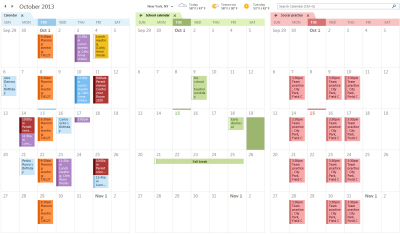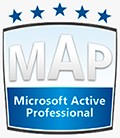

Buenas, hace poco tuve una petición de un cliente donde indicaba la necesidad de impedir que los usuarios pudiesen activar la opción de reenvio de correo desde Outlook Web App en Exchange Online.
El caso es que hacerlo en un Exchange On-Premise es muy sencillo, pero en Exchange Online no aparece ninguna opción modificable y por PowerShell junto con el uso de RBAC es posible y quería compartirlo con vosotros.
Primero que nada, tendremos que configurar nuestro entorno de PowerShell para poder conectarnos con Office365.
A continuación iniciamos sesión con credenciales de Administrador mediante lo siguiente:
$LIveCred = Get-Credential
$Session = New-PSSession -ConfigurationName Microsoft.Exchange -ConnectionUri https://ps.outlook.com/powershell/ -Credential $LIveCred -Authentication Basic -AllowRedirection
Import-PSSession $Session
Una vez iniciada sesión tendremos que habilitar las personalizaciones en nuestra suscripción con el siguiente comando:
Enable-OrganizationCustomization
Después crearemos un nuevo rol de administración tomando como base el rol base existente con el siguiente comando:
New-ManagementRole -Name Nombre_de_rol -Parent MyBaseOptions
Eliminamos el atributo de reenvio de correo del nuevo rol:
Set-ManagementRoleEntry Nombre_de_Rol\Set-Mailbox -Parameters DeliverToMailboxAndForward -RemoveParameter
Creamos una directiva nueva:
New-RoleAssignmentPolicy Nombre_de_Directiva
Damos de alta una asignación de rol de administración con el rol y la directiva creada:
New-ManagementRoleAssignment -Role Nombre_de_rol -Policy Nombre_de_directiva
Y por ultimo asignamos esta configuración al usuario que queramos:
Get-Mailbox usuario@dominio.com | Set-Mailbox -RoleAssignmentPolicy Nombre_de_directiva
Si todo va bien, cuando el usuario acceda a su Outlook Web App, podrá ver el enlace en la parte lateral derecha para reenviar el correo (imagen1), pero a diferencia de un usuario normal (imagen2), no aparecerán los campos necesarios para habilitar el reenvio (imagen3):
Imagen1:

Imagen2:

Imagen3:

Hasta la Proxima.
Me gusta:
Me gusta Cargando...


























